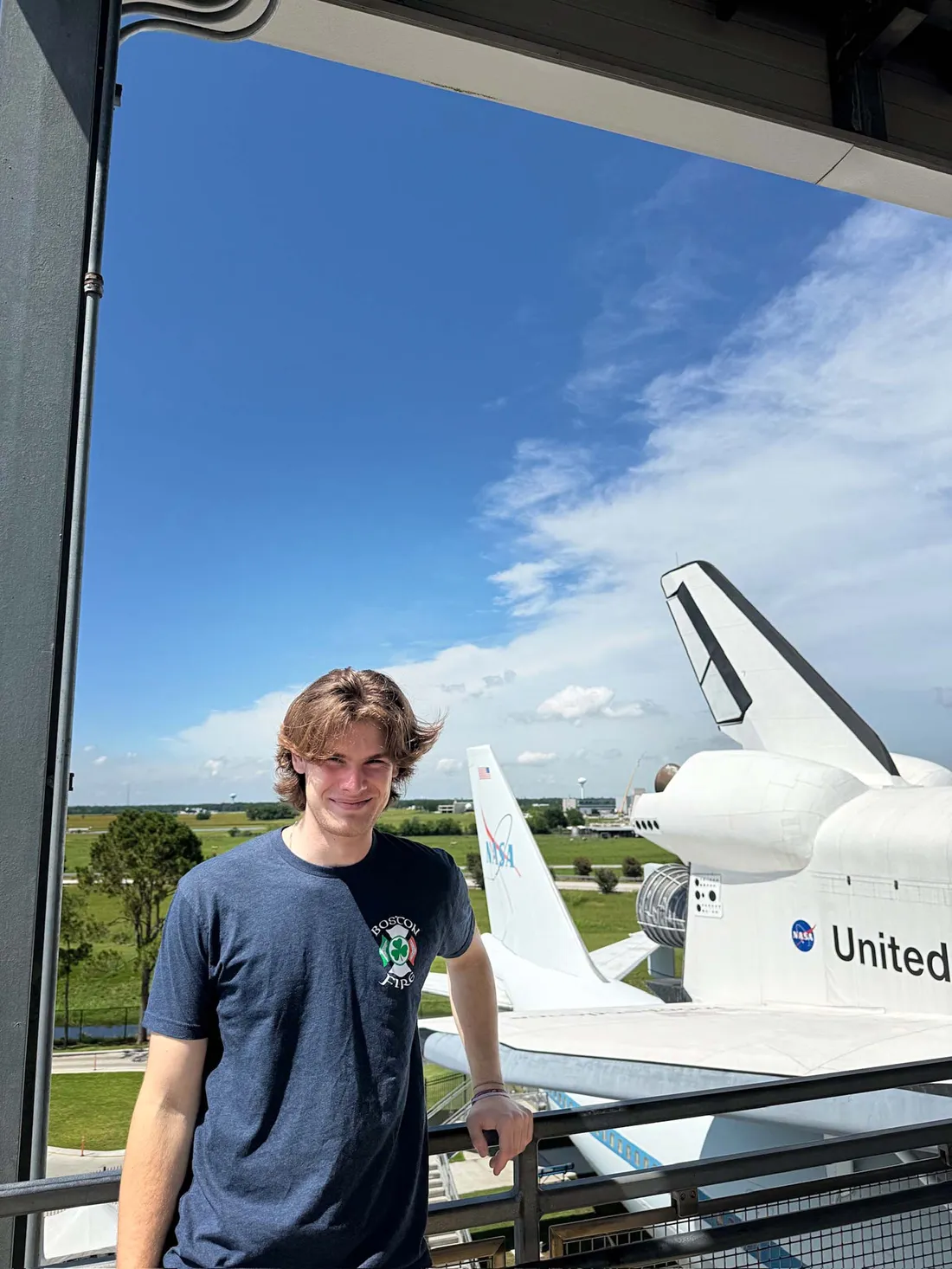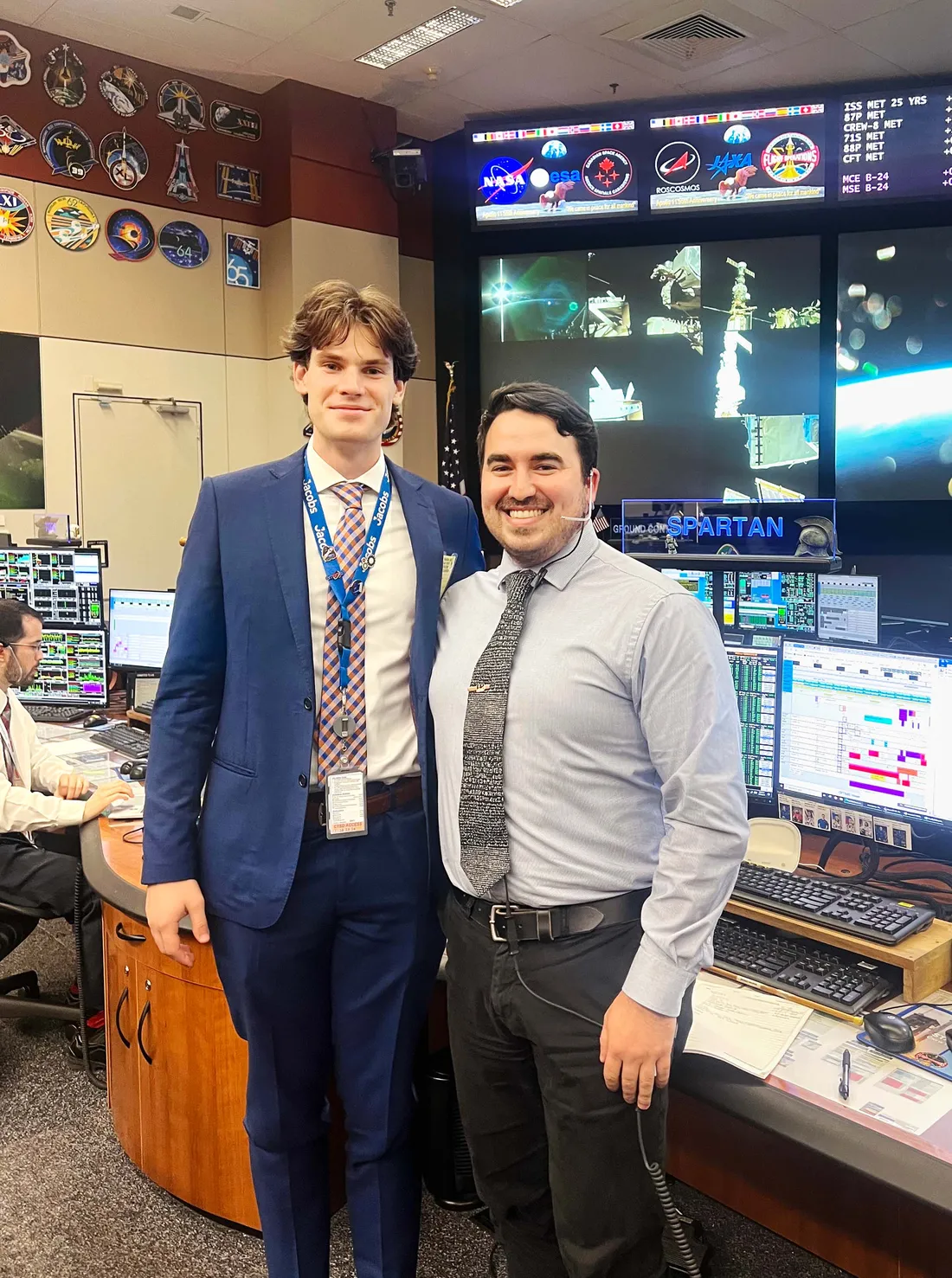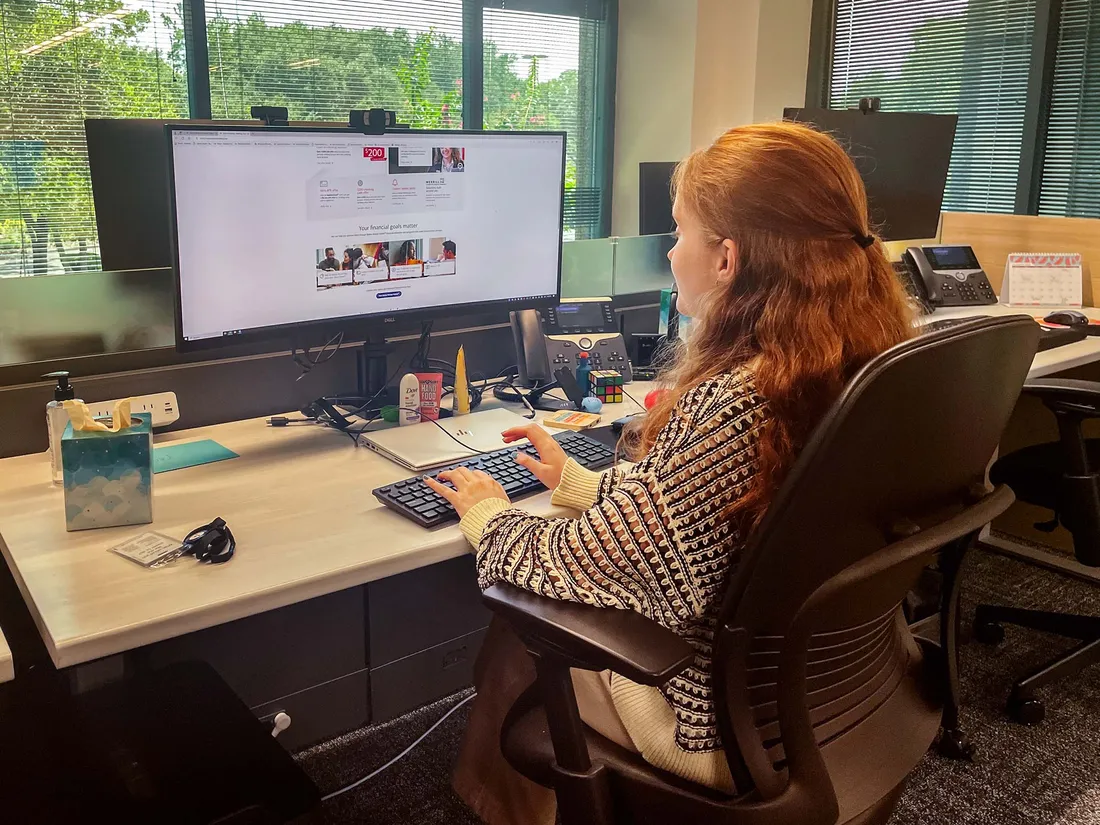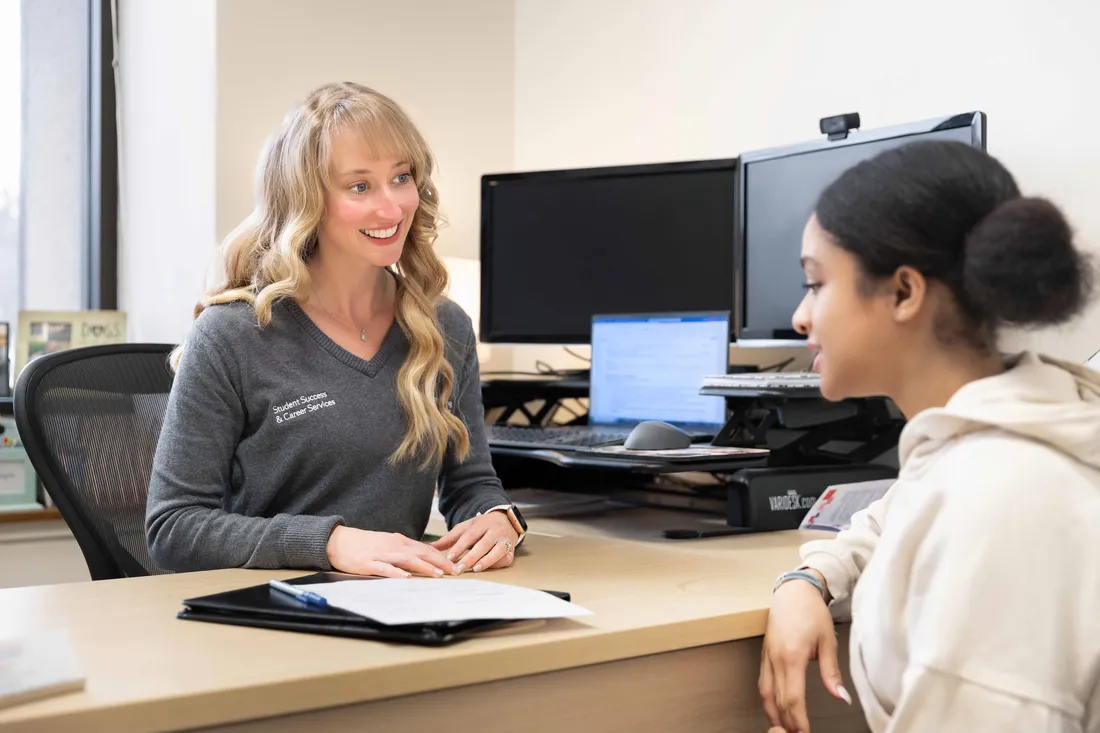
Brady Arruda ’25 explores the history of NASA’s Johnson Space Center in Houston, standing here with a space shuttle.
Brady Arruda ’25 has long been interested in NASA’s human spaceflight program, and this summer he fueled that passion with hands-on experience through an internship with Jacobs, a NASA contractor. Arruda, an aerospace engineering major in the College of Engineering and Computer Science (ECS), worked at NASA’s Johnson Space Center in Houston in the Space Environment Simulation Laboratory, an integral part of NASA since the launch of the Apollo program. “This internship gave me great insight into operations and environmental testing and opened many connections to the human spaceflight world,” he says.
Arruda credits his brother, who worked as a contractor at NASA’s Goddard Space Flight Center, for recommending he explore NASA contractors to find an internship. “I went online and found a list of popular NASA contractors working on engineering projects and then applied based on job descriptions that I was interested in,” he says. After connecting with Jacobs, he went through the interview process and received an offer to join its team in Houston.
In support of spaceflight programs, the Space Environment Simulation Laboratory houses two thermal vacuum chambers, allowing engineers to perform large-scale simulations for testing equipment and training astronauts for journeys into space. “The lab completed cryogenic testing for the James Webb Space Telescope in 2016 and now tests various vehicles and technologies from both NASA and commercial partners,” says Arruda, who participated in a diverse array of assignments in the lab. “From assisting in test build-up to looking at different components around the chambers, I had great opportunities to not only understand cryogenic system principles, but also engage with them and see them in action.”

Arruda meets in the Mission Control Center with ECS alum Ben Heyman ’16, SPARTAN flight controller for the International Space Station.
Arruda appreciated learning about topics outside of his classroom experience, including cryogenic systems, pressure vessels and vacuum chambers. In addition, he did system analysis, instead of focusing on just a small component. He also had the opportunity to continue developing his communication and presentation skills through meetings with technical and managerial stakeholders, as well as communicating with vendors and sharing conversations about technical work with nontechnical colleagues.
Add in visits to the Mission Control Center, the Space Vehicle Mockup Facility—which “houses true-to-size models of current spacecraft and international space station modules,” Arruda says—and other highlights. “The intern community at the Johnson Space Center is second to none,” he says. “I really enjoyed the many activities, tours and friends made along the way.”


